Things to do in Peru
Every country has its outstanding and special attractions. Goway has selected its top 13 things to do in Peru (not in any particular order) for you to enjoy on your visit to this destination.
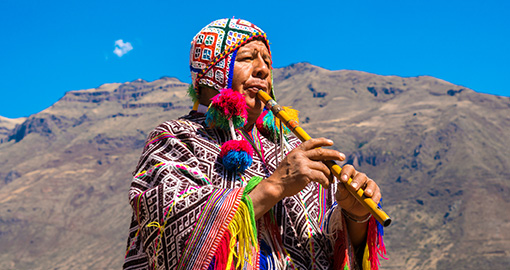
Plaza Mayor, Lima
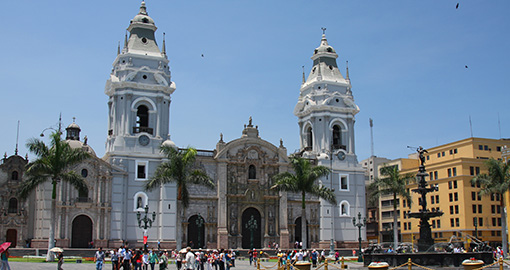
The Plaza Mayor is also known as the Plaza de Armas which is located in the heart of the city and is a very historical centre. It was in the Plaza Mayor where in 1821, the Act of Independence of Peru was proclaimed. Some of the highlights to be seen on a Peru vacation surrounding and close to the plaza are the Palacio de Gobierno (the Governors Palace), the official residence and office of Peru's president, and the changing of the palace guards which takes place each day exactly at noon, the Cathedral, the city’s first church in 1535 and rebuilt numerous times, the Archbishop's Palace originally built during the 1600s and the Municipal Palace (City Hall).
The San Francisco Church and Monastery, Lima
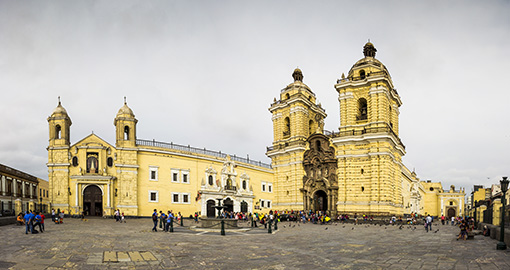
Built-in the baroque-style of the late 1600s, this church is one of the best preserved in the city. The adjoining monastery has a superb collection of ancient religious texts, some of which were brought over by the first wave of Spanish priests after the conquest of the Incas. Apart from the church and monastery, there is also a library and its catacombs, part of Lima's original cemeteries built under churches with an estimated 75,000 bodies buried under San Francisco alone.
Miraflores, Lima
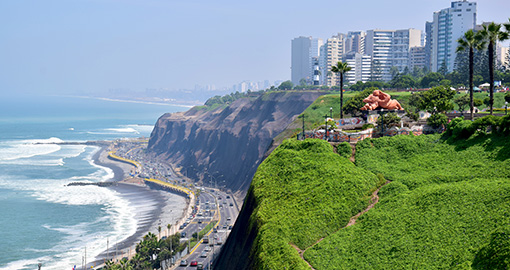
Miraflores is a suburb of Lima and an upscale district situated right on the edge of the Pacific Ocean and where many major hotels are located on Peru tours. The Malecon is a 10-kilometre/6-mile stretch of parks situated along the cliffs high above the ocean. Here you will see joggers, bikers or people simply taking in the wonderful views. Dotted around are statues created by famous Peruvian artists. One of the most popular spots is “Parque Kennedy” known to locals as the cat park. It is beautifully manicured, nicely laid out and full of hundreds of cats. The Pucllana Temple or Huaca is an adobe ceremonial centre built around 500 A.D. during the cultural height of Lima's history. Much of the site has been restored and excavations continue to uncover artifacts and the occasional mummy.
Larco Museum, Lima
The Larco Museum is a privately owned museum that features pre-Columbian art and is housed in an 18th Century building built over a 7th Century pre-Columbian pyramid. It showcases chronological galleries that provide a thorough overview of 3000 years of Peruvian pre-Columbian history through ceramic, textile and precious metal artifacts. There are also mummies that show off the different ways ancient cultures including the Incas, preserved their dead. Visitors are allowed into the museum's storerooms to see what's not on display and there is a special room devoted to erotic archaeological treasures, a collection of ceramic pots portraying a variety of sexual positions and acts.
The National Museum of Archaeology, Anthropology and History of Peru, Lima
This is Peru's oldest state museum with a wide-ranging display of perfectly preserved pre-Hispanic ceramics, textiles and metals. The museum is housed in an old Colonial mansion. The ceramics department displays over 65,000 objects mostly originating from archaeological excavations. The historical collection is composed of around 4500 pieces including canvases, sculptures, decorative art and the cultural heritage of life of the Republican Period. The textile gallery consists of more than 32,000 items from literally every Peruvian cultural period. The collection is considered to be the world's second most important textile collection.
Plaza de Armas, Cusco
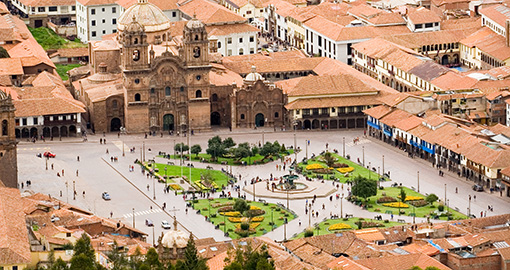
The Plaza de Armas is a square with churches, shops, restaurants and bars backing onto it and a great place, on a Peru vacation, to spend some time as it remains the heart of modern Cusco. The Plaza was once flanked by Inca palaces. The remains of the ancient walls of the famous Inca emperor Pachacutec's palace can still be seen. The Plaza's north-eastern edge is dominated by the Cathedral which was begun in 1550 and completed nearly 100 years later and constructed in the shape of a Latin cross. It contains nearly 400 colonial paintings including the Last Supper by Marcos Zapat and is one of the city’s greatest repositories of colonial art, especially for works from the escuela cuzquena (Cuzco school), noted for its decorative combination of 17th-century European devotional painting styles.
Sacsayhuaman, Cusco
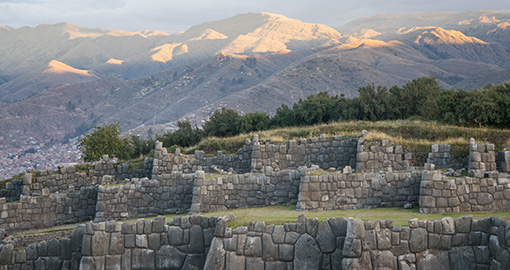
Sacsayhuamaen, just outside the city, is a magnificent Inca fortress overlooking Cusco and a very important Inca construction. It is believed that some 20,000 men had been involved in its construction. According to legend, some 3000 lives were lost when one huge stone that was being dragged uphill broke free. Sacsayhuaman played an important part in the final defeat of the Inca Empire by the Spanish who entered Cusco unopposed in 1533 and lived there securely for more than two years before finally being caught unprepared by a rebellion. Once a year, the Inti Raymi (Quechua for "Sun Festival) takes place, a religious ceremony dating back to the Inca Empire days. During the Inca Empire, the Inti Raymi was the most important of four ceremonies celebrated in Cusco. Celebrations involve music, colourful costumes and the sharing of food.
Machu Picchu
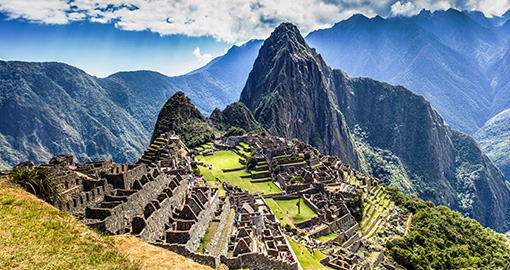
Machu Picchu is known for its location and surrounding breathtaking panoramic views plus the discovery of what was an ancient, active Inca city. It is a complex of palaces and plazas, temples and homes and may have been built as a ceremonial site, a military stronghold, or a retreat for ruling elites. On Machu Picchu tours, you can see ruins which lie on a high ridge surrounded on three sides by the Urubamba River some 610 metres/2000 feet below. Machu Picchu was built around 1450 at the height of the Inca Empire. The upper town is where the temples are which were used for religious and ceremonial purposes. The lower town is where the lower class people lived. It includes storage buildings and simple houses. Machu Picchu is made up of more than 150 buildings ranging from baths and houses to temples and sanctuaries. It was probably the most amazing urban creation of the Inca Empire at its height and its giant walls, terraces and ramparts seem as if they have been cut naturally into the rock escarpments.
The Sacred Valley
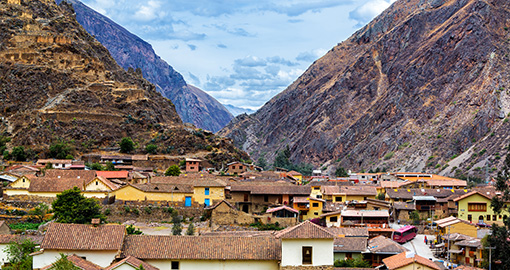
The Sacred Valley of the Incas is a valley traversed by the Urubamba River and contains many famous and beautiful Inca ruins. It is located between Cusco, once the capital of the Inca Empire and the legendary Machu Picchu. It was called the Sacred Valley because it contained some of the best lands in the region and was not a part of the Inca Empire as such but the property of the Emperor himself. It was once the centre of the ancient Incan civilization and was worshipped for its fertility, natural resources and strategic position. Today, it is a collection of interesting small towns and colourful indigenous people plus fascinating local markets such as Pisac with its Sunday market and Sun Temple, Ollantaytambo, once a country retreat for Inca royalty and nobility with its cobblestone streets and Moray with its Inca ruins.
Arequipa
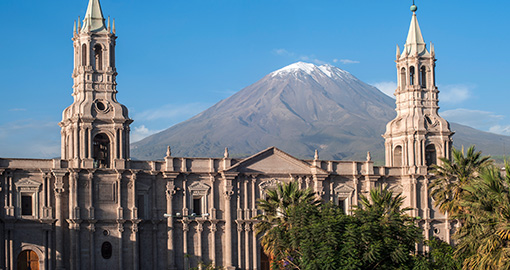
Arequipa is Peru’s second-largest city with a striking atmosphere created by the mixture of Spanish colonial and indigenous influences. Founded in 1540, it is a blend of European and native characteristics. It is definitely a contrast to the Inca-oriented Peruvian cities. It was declared a UNESCO World Heritage Site because of its buildings and architecture. Many of the buildings are made from rock quarried from local volcanoes. Highlights, on a Peru vacation, include the Plaza de Armas, the main plaza which is lined with impressive colonnaded balconies and cafes and restaurants, the Cathedral of Arequipa dating back to 1656, the Santa Catalina Convent, one of the most fascinating religious buildings in Peru as it is more than a religious edifice as it is a citadel within the city, the Church and convent of San Francisco, originally built in the 16th Century with some sculptures among the most beautiful in Arequipa and the Andean Sanctuaries Museum with its famous mummy "Juanita, known as the Ice Princess" who was discovered in 1995 just below the peak of a local mountain and had been well preserved in ice for more than 500 years. Nearby Arequipa is El Misti, a volcanic mountain and the Colca Canyon, a river canyon well known as one of the world's deepest canyons. It is also the habitat for the giant Andean condor.
Amazon Region
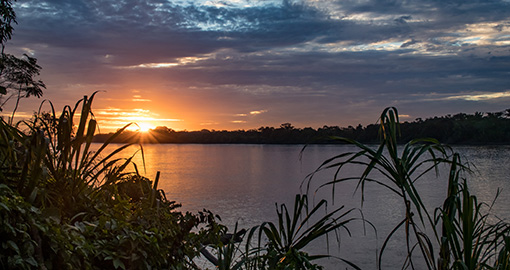
Jungle ecotourism has really grown in the Amazon region and rainforests are now much more accessible with eco-lodges springing up here. A fact is that it has the second largest portion of the Amazon rainforest which covers 74% of the country’s area. Another fact is that one-fifth of all migrating bird species fly through Peru. Tambopata is a river, a national reserve and a province in southeastern Peru. It has some of the most biodiverse rainforests in the country and maybe the entire Amazon basin. Although remote and wild, it is still easily accessible. Hidden beneath the trees are troops of monkeys, toucans, brilliantly coloured macaws and even jaguars.
Lake Titicaca
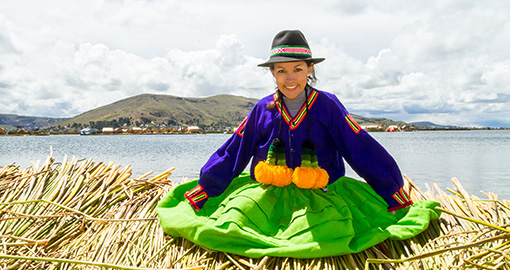
Lake Titicaca is the 18th largest lake in the area worldwide and the largest lake in South and Central America sandwiched between Peru and Bolivia. It is also the world’s highest navigable lake at 3845 metres/12,500 feet above sea level. The port city of Puno is situated on a picturesque hillside overlooking the lake where you will see people, women mainly, dressed in traditional ethnic clothing. The nearby Uros Floating Islands are a group of around 44 man-made islands within Lake Titicaca and are made of Tortora rushes as are the houses and the residents’ boats. The biggest island has several buildings including a school, post office and…souvenir shops. The people of the Uros Islands, who predate the Incas, speak the Aymara language. There are three interesting sites on the lake. Sillustani is a pre-Inca burial ground not far from Puno. Cutimbo offers chullpas, ancient Aymara funerary towers, located on top of a table-topped volcanic hill. Chucuito is an ancient site where there are 86 phallic stones in the Temple of Fertility. Although no definitive answer has been discovered, the rock's resemblance to male genitalia remains uncanny. Amantani is an island with two mountain peaks, Pachatata ("father earth") and Pachamama ("mother earth") with ancient Inca ruins on top of both.
Nazca Lines
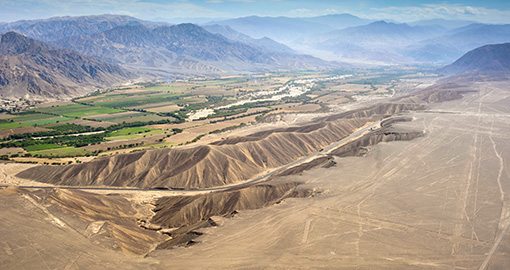
The Nazca Lines are one of archaeology’s most perplexing enigmas. Located in the arid coastal desert of Peru, they cover 450 square kilometres/280 square miles. They are thought to have been created by removing rocks and topsoil and exposing lighter soil underneath. There are two groups of geoglyphs (large artworks that have been etched into the landscape and are best viewed from above). One is made up of geometric shapes such as triangles, spirals, rectangles and wavy lines. Others depict animals such as spiders, monkeys, hummingbirds, killer whales and a condor. This is best seen on Peru tours from the air on a light aircraft flight.
Get a Trip Quote Order a Brochure

















